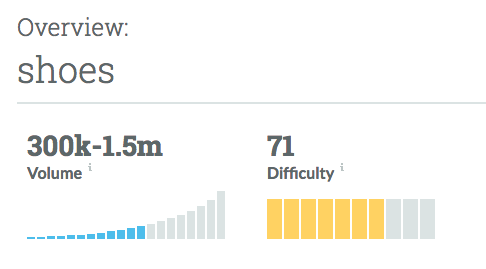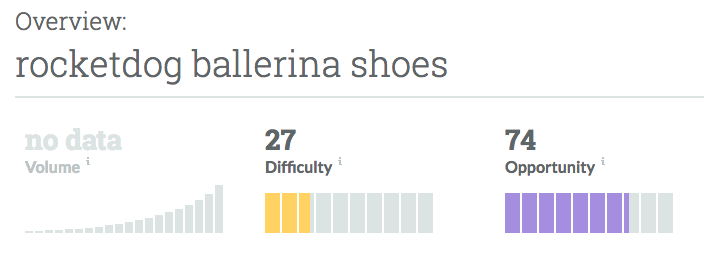
If you missed Part I of email marketing basics, check it out today.
We said it before and we’ll say it again: email marketing isn’t about selling, pushing, or screaming. It’s about connecting with your customers in a real way. We’re here to break down some misbeliefs about email marketing to help you get the bottom of it.
How Often
Everybody gets so much information all day long that they lose their common sense. They listen so much that they forget to be natural.
– Gertrude Stein, Reflection on the Atomic Bomb
Send too often, and customers will get really bored of you. Don’t send enough, and customers might forget about you. So what’s the deal? Email marketing campaigns are about reminding your customers to make moves exactly when they’re ready. It’s not about pummeling them with annoying, over-the-top emails, it’s not about sending 10 emails a week, and it’s not about over-saturating their inbox with useless info. There’s no hard-and-fast rule about frequency, so the only true way to tell is to test it. According to Campaign Monitor,
“Test your send frequency on smaller portions of your list to measure impact. Remember, getting more opens and clicks without a change in visits or revenue might not equate to anything tangible so always test before you dive head first” (Campaign Monitor).
If you’re leading customers through a specific process, you can use some math to generate ideas. Or, you can use those programs we explored in Part I to analyze your data. But we think the best way to really figure it out is to use common sense. Would you want daily emails from a company you care about? Probably not. We don’t even like daily emails from our best friends (sorry, James!), so keep your cool and keep it cool.
Start low. Try for an email a month and see how it goes. If your customers are responding, you can increase that number and see what happens. If people are unsubscribing or not opening your emails, then you should refocus by looking at tone, length, and finally frequency.
A Plan of Attack
According to HubSpot, you should create a hypothesis first, segment your subscribers, figure out which test metrics you want to use, create your emails, and then, after you send them out, analyze the data against your hypothesis.
Remember that some bits of info, like open rates, aren’t really helpful because they are only considered “opened” if the images involved in the email are downloaded, and many people use image-blocking email features, so this is one metric that you can forget about that one entirely. Focus instead on more important data like conversion rate or click-through rate.
How Much
Deciding how much text to use in promotional emails is pretty specific. HubSpot suggests you should consider the following questions:
- Who are you sending to?
- What are you talking about?
- What kind of email is it?
According to The Atlantic and Boomerang, an email of 50-125 words is best.
Like everything else in this process, it’s best to try it out and see what happens. One thing isn’t going to work for every single company, so it’s important to see what works for you and your audience. Try split-testing your emails to track customer engagement. No one’s clicking on longer emails? Chop your text in half. Check again. Is everyone responding to less text and more high-quality images? Whatever you notice, try to replicate it and check it out again later on.
What Tone
Once you have an idea for what length you want to hit, you can start thinking about how you want to say it. Before you decide on a tone, you’ll want to consider a few questions:
- Who is your audience?
- What’s your brand’s voice?
- What’s the point of the email?
- What type of action do you want subscribers to take?
No matter what tone you decide on, make sure you’re writing to a wide audience. No one wants to sit through a bunch of jargon and the latest version of the dictionary.
Boomerang analyzed the data and they’ve come up with some interesting email marketing tricks to keep in mind.
- Write for a 3rd grader
- Write with emotion
- Keep headlines short (3-4 words)
- Ask questions (1-3 tops)
- Be subjective (facts are boring. Spice it up!)
Content = Form + Function
Once you know what you want your customers to do, you can incorporate a tone that your customers will get. Selling high-fashion jewelry? A funny tone probably won’t work. Writing an informational article? Leave out the GIFs.
You know your company and your customers best, so make sure you follow brand guidelines, best practices, and use a tone that will excite your customers. Oh, and Boomerang also suggests that emails received in the morning or at lunch are more effective, so do that! Check out some examples below, and then hit the drawing board.
Email Marketing Examples
Artifact Uprising – Simple, image-based emails to generate sales.
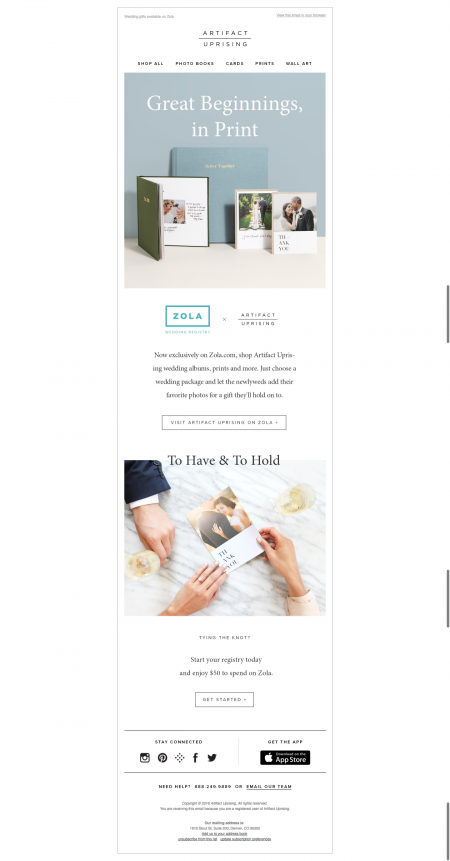
General Assembly – Informative email campaign to spread awareness of events and bolster following.
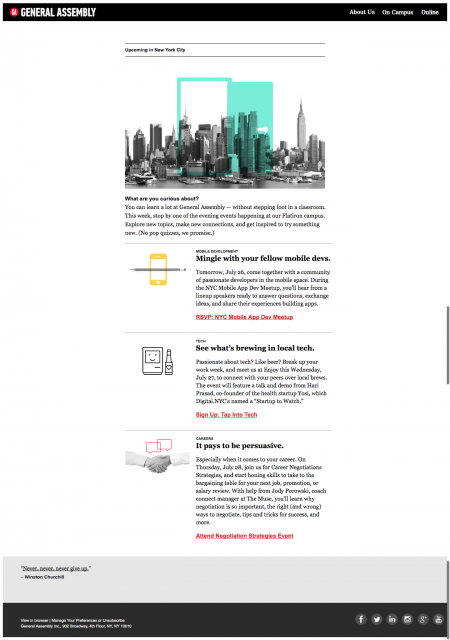
Uber – An event-focused email to inform customers of possible delays, changes, and event information.
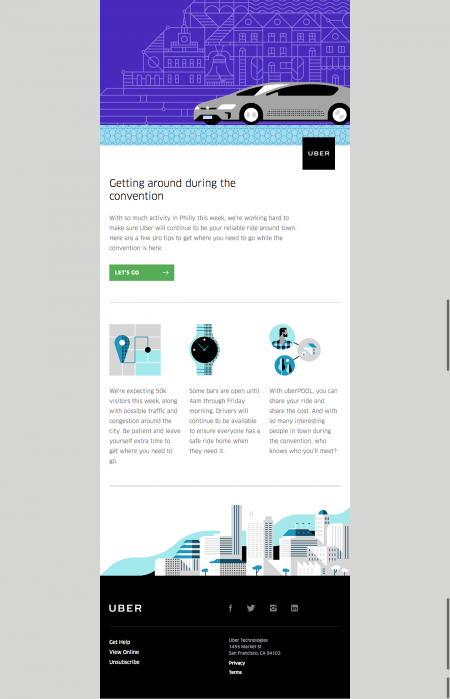
As you can see, the tone, length, and information in these emails is dependent upon very specific goals. If you know who your audience is, what you’re selling, and what your end goal is, you’ll have a good chance of creating visually appealing and compelling email marketing campaigns.
Don’t know where to start? Go back to Part I, where we explore email marketing basics including generating email lists, collecting emails, and email marketing applications.

